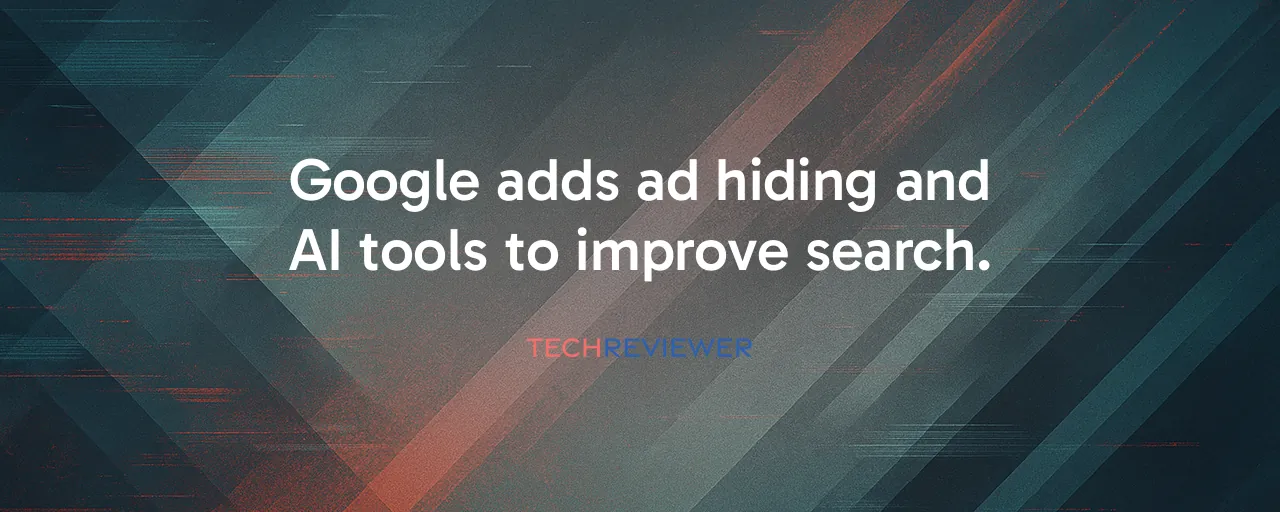A Fresh Take on Search Navigation
Google's latest Search update feels like a quiet revolution in how we interact with the web's biggest gateway. The company rolled out changes on October 14, 2025, letting users collapse ads with a single tap on a 'Hide sponsored results' button. This move creates a less cluttered view of search results, addressing years of complaints about ad-heavy pages. The catch? Ads don't vanish entirely. A persistent 'Sponsored Results' label sticks around at the top or bottom of the page, keeping advertisers in the loop while giving users more control. It's a clever compromise, built to ease frustration without slashing Google's core revenue stream, which leans heavily on advertising.
This update spans desktop and mobile, with a focus on smoother navigation. For example, users can now jump back to the top of the page more easily, a small but welcome tweak for anyone who's scrolled endlessly through results. Google caps text ads at four per group, ensuring the screen doesn't feel overwhelmed. The same 'Sponsored' label also pops up in Shopping ads, rebranded as 'Sponsored Products,' signaling a consistent approach across the platform. These changes reflect Google's attempt to keep users happy while protecting its business model.
AI Steps Up to Personalize Discovery
Beyond ads, Google's leaning hard into AI to make Search and Discover more intuitive. The Discover feed on the Google app now uses machine learning to surface trending topics tailored to your interests. Short previews expand into deeper dives with links to explore, rolling out in the U.S., South Korea, and India. For sports fans, a new 'What's New' button pulls real-time updates on players or teams, aggregating news and posts into a single feed. This feature, launching in the U.S. soon, taps into Google's Knowledge Graph to deliver fresh, relevant content without forcing users to hunt for it.
These AI-driven tools build on years of refinement, from BERT in 2019 to MUM in 2021, and now advanced language models powering AI Overviews. These summaries, which answer queries directly at the top of Search, are getting tighter integration. While they're a boon for users wanting quick answers, they've sparked worry among publishers, who've seen traffic drops of 20-40% in test markets where AI Overviews dominate. The trade-off is clear: users get instant info, but content creators lose clicks, raising questions about the long-term health of the web's content ecosystem.
Balancing Act for Advertisers and Publishers
Google's updates put advertisers in a tricky spot. The collapsible ad system keeps their presence visible through persistent labels, but some small businesses report lower impression volumes in early tests, even if conversion rates hold steady. Larger brands, with deeper pockets for optimization, might adapt faster, potentially widening the gap between big and small players. Still, Google's data shows top-position ads historically get the most clicks, so keeping labels prominent could soften the blow. Advertisers now face a learning curve, tweaking campaigns to fit a world where users can hide ads but still see their branding.
Publishers, meanwhile, are sounding alarms. As AI Overviews answer more queries directly, fewer users click through to websites, cutting into ad revenue and subscriptions. This isn't new, Google's shift to direct answers began with Knowledge Graph in 2012, but the scale feels different now. Some publishers argue for revenue-sharing models, pointing to Google's reliance on their content to train AI models. Others are exploring subscriptions or partnerships to stay afloat. The tension highlights a broader challenge: how does a search giant keep users, advertisers, and content creators in harmony?
Lessons From the Field
Looking at real-world impacts, two cases stand out. First, a group of U.S. news publishers reported a 30% traffic drop after AI Overviews expanded in 2024, forcing them to pivot toward direct reader subscriptions. One outlet, a mid-sized sports site, saw engagement rebound slightly by optimizing for Google's 'What's New' feature, which funneled users to their breaking news. The lesson? Publishers need to adapt fast, leaning into Google's new tools rather than fighting them. Second, a small retail business testing collapsible ads in California saw steady conversions despite fewer impressions, suggesting smarter targeting can offset reduced visibility. The takeaway here is that flexibility and data-driven tweaks are key for advertisers navigating this shift.
These examples show Google's updates aren't just technical, they're reshaping how businesses and creators connect with audiences. Users gain a cleaner, more tailored experience, but the ripple effects challenge long-standing digital models. As Google refines its approach, the industry watches closely, knowing these changes could redefine how we find and share information online.
